Click on images to enlarge

habit (Photo: Sheldon Navie)
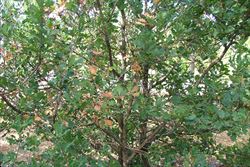
habit (Photo: Sheldon Navie)

bark on main trunk (Photo: Sheldon Navie)

young branch with buds in leaf forks (Photo: Sheldon Navie)
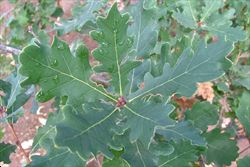
leaves (Photo: Sheldon Navie)
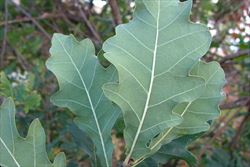
close-up of leaf undersides (Photo: Sheldon Navie)

young leaves are light green in colour (Photo: Sheldon Navie)

male flower clusters with new leaves in spring (Photo: Rob and Fiona Richardson)
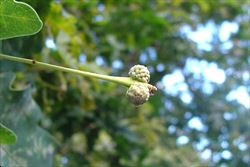
female flowers (Photo: Sheldon Navie)

young fruit beginning to develop (Photo: Rob and Fiona Richardson)

immature fruit (Photo: Rob and Fiona Richardson)
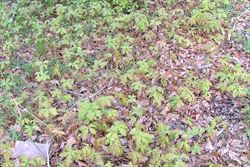
infestation of seedlings under a parent tree (Photo: Sheldon Navie)
Scientific Name
Quercus robur L.
Family
Fagaceae
Common Names
common oak, English oak, English oak tree, European oak, oak, oak tree, pedunculate oak, truffle oak
Origin
Native to Europe and western Asia (i.e. Turkey and south-western Russia).
Naturalised Distribution
Occasionally naturalised in some parts of south-eastern Australia (i.e. naturalised in south-eastern South Australia and Victoria and sparingly naturalised in the ACT).
Also naturalised overseas, including in north-eastern USA (i.e. Ohio, Pennsylvania, New York, New Hampshire, Maine, Massachusetts and Rhode Island).
Notes
English oak (Quercus robur) is commonly grown as an ornamental in the temperate regions of Australia. It has spread from these deliberate plantings and is becoming regarded as an environmental weed in Victoria and the ACT, though infestations are not currently very widespread.
In Victoria, English oak (Quercus robur) is listed as a minor environmental weed in Knox City. It is also an environmental weed in Dorothy Laver Reserve, in Glen Iris, where moderate numbers of plants are present in swamp scrub vegetation. English oak (Quercus robur) has also been recorded in conservation areas in South Australia (i.e. in Scott Creek Conservation Park).

